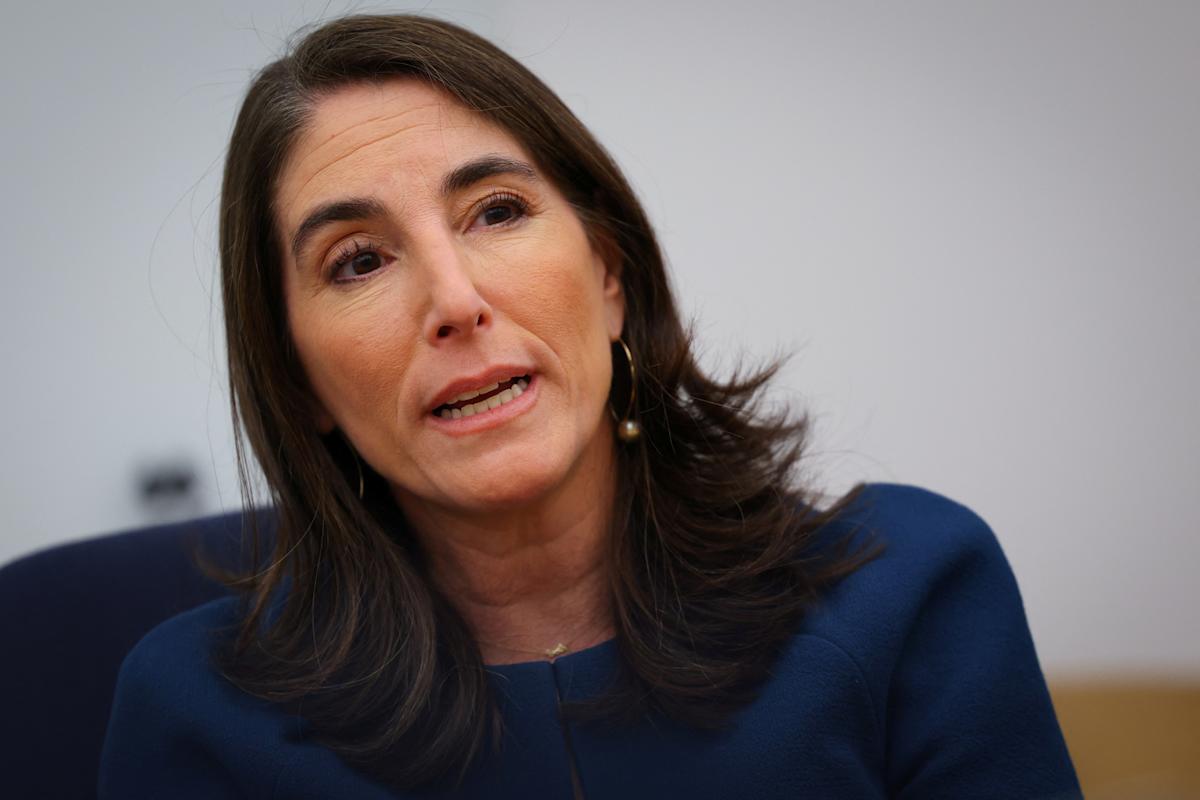‘It’s not obvious’ the central bank should cut rates further
Cleveland Fed president Beth Hammack doubled down Thursday on her concerns about inflation, saying that it’s not obvious the central bank should cut rates further.
“I remain concerned about high inflation and believe policy should be leaning against it,” Hammack said at the Economic Club of New York. “After last week’s meeting, I see monetary policy as barely restrictive, if at all, and it’s not obvious to me that monetary policy should do more at this time. But the future is inherently uncertain, and I’m watching developments closely.”
Hammack said she believes the current level of the Fed’s benchmark policy rate of 3.75% to 4% is close to her estimate for neutral — a level designed to neither spur nor slow economic growth. Cutting below this level makes her nervous, given what she sees as a “bigger mess on the inflation side than the employment side.”
Compared with the Fed’s 2% inflation objective, Hammack says inflation is too high and trending in the wrong direction. She noted that the Fed is missing its target by a full percentage point on the inflation side, and it’s likely not going to get back to target for a couple of years, whereas the unemployment rate is less dire.
Read more: How the Fed rate decision affects your bank accounts, loans, credit cards, and investments
While Hammack said that economic theory suggests tariffs should result in a one-time increase in prices, that’s not what she sees or expects.
“The tariff changes have been large, dynamic, and ongoing — far from a textbook implementation,” Hammack said. “Based on all of these considerations, I don’t see elevated inflation as a purely transitory phenomenon that I should look through.”
Hammack said the business owners she speaks with are making tough decisions about which costs to absorb and which ones they need to pass through to customers. A Cleveland Fed survey found that the more a firm is reliant on imports, the greater the expected pass-through. Hammack said that helps explain why more than two-thirds of her construction contacts told her they expect to pass all or most of their tariff-related cost increases on to their customers.
Read more: What Trump’s tariffs mean for the economy and your wallet
Hammack also noted that businesses have mentioned sharply rising health and property insurance premiums, plus rising electricity costs, as top of mind. And in the near term, artificial intelligence is actually increasing costs for businesses.
She also noted that some inflation measures that should be relatively unaffected by tariffs are sticky, pointing to inflation in core services excluding housing, which was 3.4% in August, little changed from the 3.6% reading in August 2024.



Leave a Comment
Your email address will not be published. Required fields are marked *